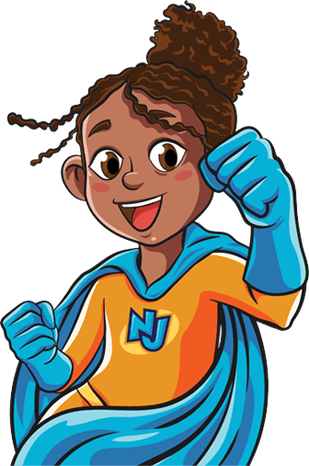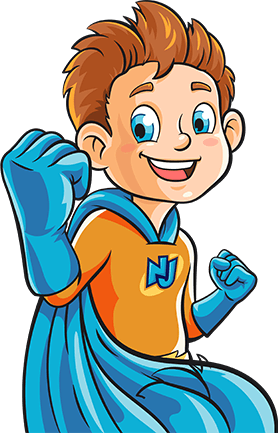We strongly agree with a team-oriented approach where surgeries and procedures can be combined, to eliminate un-necessary trips to the OR. With the combined experience of decades of surgical training and expertise, this team of surgeons will provide YOUR child with cutting edge technology, care and treatments that reduce your anxiety as a parent, and will make the overall surgical experience a successful and POSITIVE one.
From the time of diagnosis, through the surgical planning, and scheduling, your family will be involved at all times, keeping you informed every step of the way. Surgeries are all done through the “Family Centered Care” program, so that parents can stay with their children at ALL times. Our patient floor rooms are all designed for parents to dorm-in, with your children. We only work with pediatric anesthesiologists. THAT is an important factor in considering WHO will be doing your child’s surgery and WHERE.
Craniosynostosis is a condition where the “spaces” or sutures between the bones of the skull, FUSE and close abnormally. This premature closure of the sutures or “synostosis” causes an abnormal head shape to develop. The treatment of craniosynostosis DOES involve surgery, and now, thanks to the innovative ideas, research and surgeries done by Drs. David Jimenez and Constance Barone, specially trained pediatric neurosurgeons and plastic-reconstructive surgeons are offering patients minimally invasive correction of craniosynostosis. Of course, every surgery has its indications. But, here at the NJ Craniofacial Center we consider endoscopic, minimally invasive surgery for all infants with craniosynostosis. If there is a safe and effective way to have your child’s surgery done…you can find it right here!
Traditionally, treatment for craniosynostosis has been through surgery to unlock and reshape the bones of the skull. Such surgical methods typically involve an ear-to-ear incision that removes, modifies, reshaped and reattaches affected areas. Although this method is still valid in certain cases, advancements in technology have enabled us at NJ Craniofacial Center to provide a more minimally invasive approach when treating patients with craniosynostosis.
Developed in the late 1990’s, endoscopic surgical repair for craniosynostosis offered surgeons a way to “open” the fused or locked sutures of the skull, instead of making a large incision on the infant’s head. Pediatric neurosurgeons and craniofacial surgeons use small incisions to limit the “appearance” of a scar on the infants head, and to minimize a “post-operative” look. Using endoscopes, and specialized instruments, surgeons are able to unlock the fused suture and allow the infant’s head shape to become more normal. Once the sutures are opened, the infant has a custom made helmet constructed that allows their head to “re-mold” into a more symmetrical shape.
Endoscopic surgery for craniosynostosis shortens the length of the operation, and minimizes the risks involving blood loss and transfusion. Often children may go home the day after surgery. Infants are closely monitored by our team members after surgery, and brought back regularly to the NJ Craniofacial Team for follow-up evaluations.

Traditionally, surgery for craniosynostosis has involved both a plastic-reconstructive surgeon and a pediatric neurosurgeon. Occasionally, in some cases, an oral-maxillo-facial surgeon is also involved. Most children and infants with single suture craniosynostosis do not require more than one corrective surgery, but in some cases, especially for children with multiple suture fusion, multiple surgeries are required, sometimes in a staged approach. Even with these most complicated cases, our team has proven over and over again, that we are able to provide the best, comprehensive and collaborative care for these children with minimal risks.

Traditional craniosynostosis repair involves “opening” the scalp to expose a large part of the skull or cranial vault. The fused sutures are then removed and pieces of bone are “moved” so that the skull is re-molded into a “normal” shape. Sometimes, the surgeons will use absorbable, mini-plates or screws, to secure the pieces of bone in position. At other times, in young infants, heavy absorbable suture or “string” is used, under the skin, to “hold” the bone in proper position until it heals. The skull bones typically heal in 2- 6 months, so that after surgery, your surgeon may recommend a protective helmet. This reduces YOUR anxiety and prevents damage to the reconstructed skull, just in case your baby hits his head or falls. Accidents happen, and believe me, as parents and physicians, we have seen it all! We anticipate every need your child will have before, during and after surgery.
For traditional surgery, children are usually in the hospital for 3-7 days, depending on the extent of skull reconstruction. Your child may spend 1 – 2 nights or longer in the Pediatric ICU if need be. You will be allowed to stay with your child 24-7. We have physical therapists, child life specialists, ICU doctors and nurses who are number one in the state! Their level of caring for each patient and their family has earned them statewide and national recognition. Even after transfer from the ICU to the floor, our team of specialists, guides and supports your child’s recovery every step of the way. We have discharge coordinators and specialists who assess the needs of your child and your family before you leave the hospital. If there are any therapies needed, we assist in making those arrangements and care plans before discharge. Once your child arrives home, we follow your child’s healing and recovery throughout their childhood. You will never feel “alone” in your child’s road to recovery!

No two children are the same, and neither should be the approach to the treatment of craniosynostosis. EVERY child with craniosynostosis will be assessed by the NJ Craniofacial Team and an individualized care plan will be recommended. We will provide both you AND your pediatrician, detailed information and options that allow YOU as the parent, to make an educated decision that you are comfortable with. Whether your child needs traditional surgery or is a candidate for an endoscopic repair of craniosynostosis, all of your questions will be answered in a family-friendly and understandable way. For any questions regarding your child’s surgery, please call our center at the number below.
Craniosynostosis is a birth defect in which one or more of the bones in your baby’s skull close prematurely, causing problems with the shape of the head and brain. The best craniosynostosis surgeons are highly experienced in performing corrective surgery for this condition.
The source of craniosynostosis in the majority of infants is unknown and these children are usually healthy. However, this craniosynostosis causes can be inherited – gene changes affect which leads to the disorder. Syndromes that present with craniosynostosis include:
Apert , Crouzon, Pfeiffer, Muenke, Saethre-Chotzen, Antley-Bixler, Frontonasal dysplasia
Pediatric craniosynostosis surgery is the most common treatment for craniosynostosis. The goals of surgery are to create a normal appearing skull and to restore normal brain growth. Correction of the deformity often requires removal of the fused bone and reconstruction with strips of graft bone or plates and screws.
Sometimes, an office examination is all it takes to diagnose craniosynostosis. However, more in-depth imaging like a CT scan can be used to verify the diagnosis and get 3D views of the skull with minimal radiation exposure – lower than that of just a few regular x-rays!
Most children have some swelling and bruising around the surgery site. The surgical incision may also be sore and red for a few days after surgery. Your child’s head may feel tight and a little bit bigger than usual. This is because the skin and muscles have been stretched during surgery.
If craniosynostosis is not treated, it can lead to problems with brain development and changes in the shape of the head and face. Treatment typically involves surgery to open up the fused bones and allow the skull to grow normally.
Types of synostosis can include:
Some of different types of Craniosynostosis
The symptoms of craniosynostosis can vary depending on the severity of the condition, but can include: difficulty with breathing, headache, lethargy, hearing problems, vomiting, nausea, problems with vision, and an increased risk of developing seizures. In some cases, craniosynostosis can also lead to developmental delays or difficulties with learning.
Craniosynostosis is often treated with surgery to open the fused sutures. If there is pressure on the brain, this surgery may be done as soon as possible. Surgery for craniosynostosis can be done when the child is very young or when the child is a bit older.
To schedule a private consultation with NJ Craniofacial Center, please call our office or request an appointment online. We look forward to your visit.
131 Madison Avenue, Third Floor, Morristown, NJ 07960